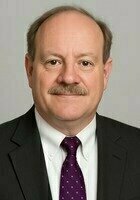All Human Anatomy and Physiology Resources
Example Questions
Example Question #73 : Musculoskeletal Physiology
Which of the following statements about osteogenesis is false?
Osteoblasts are responsible for allowing the bone to thicken
Osteogenic cells in the periosteum surround hyaline cartilage on the epiphyses of long bones
Cartilage is replaced with bone tissue in order for long bones to lengthen
Osteoblasts hollow out the center of the bone
Osteoblasts hollow out the center of the bone
Bone growth has multiple steps that allow growth in both length and width. One thing to remember is the functions of the bone cells during growth and development. Osteoclasts are responsible for "hollowing out" the center of long bones, which makes for larger cavities within the diaphysis. Osteoblasts, on the other hand, are responsible for laying down additional bone matrix on the outsides of the bones.
As bone cells mature, they become further embedded within subsequent layers of the bony matrix. Osteogenic cells, which give rise to osteoblasts, are located in the outer periosteum of the bone. When damage occurs to the bone, osteogenic cells differentiate and begin repairing the bony matrix from the outside.
Example Question #7 : Bone And Articular Physiology
What is the piezoelectric effect?
Negative potential resulting in bone deposition
Electric potential that is generated in response to mechanical stress
Orthodonture or bone remodeling
Positive potential resulting in bone resorption
Electric potential that is generated in response to mechanical stress
Bone is a dynamic tissue that remodels under mechanical stress, or orthodonture. Mechanical stress in bone generates electric potential via the piezoelectric effect. Negative potential results in bone deposition (bone is laid down) whereas positive potential results in bone resorption (bone is broken down).
Example Question #77 : Musculoskeletal Physiology
Which of the following is NOT a zone of the epiphyseal growth plate?
Zone of maturation
Zone of proliferation
Zone of cartilage
Zone of calcification
Zone of cartilage
Histologically, the epiphyseal growth plate is divided into five zones. From epiphysis to diaphysis they are the resting zone, zone of proliferation, zone of maturation, zone of calcification, and zone of ossification. At the growth plate, cartilage is constantly being developed into the bone of the diaphysis. The stages of this process align with the regions of the epiphyseal plate. The resting zone houses quiescent chondrocytes that are not yet active in bone synthesis. The zone proliferation is characterized by chondrocyte mitosis and replication. These cells then develop and grow with in the zone of maturation. Eventually the cells reach their maximum growth and undergo apoptosis to release cell contents in the zone of calcification. This prevents cartilage from infiltrating the bony region of the diaphysis. The chondrin matrix begins to calcify in this zone as well. As calcification progresses and the organic cartilage matrix is replaced by bony hydroxyapatite mineral in the zone of ossification, the epiphyseal plate completely replaces the original chondrocytes with bone.
As more bone is produced, the epiphyseal plate is pushed farther and farther away from the midpoint of the bone. The lengthening of the bone ends when the zones of the epiphyseal plate fuse and further growth becomes impossible.
Example Question #3 : Bone And Articular Physiology
Which of the following cell types synthesizes hydroxyapatite?
Osteoclasts
Osteoblasts
Common lymphoid progenitor cells
None of these
Satellite cells
Osteoblasts
There are three primary types of bone cell: osteoblasts, osteocytes, and osteoclasts. Osteoblasts are responsible for creating new bone by sequestering minerals and generating new hydroxyapatite matrix. Osteoclasts break down this matrix, releasing the minerals into the blood. Osteocytes are mature osteoblasts that have become embedded in the matrix of the bone and serve primarily for communication purposes.
Satellite cells are located at the periphery of muscle cells and are capable of dividing and giving rise to new myoblasts. Satellite cells are, essentially, adult muscle stem cells. Common lymphoid progenitor cells are another type of adult stem cell, housed in red bone marrow, and are responsible for regenerating the erythrocyte population of the body, as well as producing lymphocytes.
All Human Anatomy and Physiology Resources




